Abstract
In a review of 103 sets of data from 23 different studies of choice, Baum (1979) concluded that whereas undermatching was most commonly observed for responses, the time measure generally conformed to the matching relation. A reexamination of the evidence presented by Baum concludes that undermatching is the most commonly observed finding for both measures. Use of the coefficient of determination by both Baum (1979) and de Villiers (1977) for assessing when matching occurs is criticized on statistical grounds. An alternative to the loss-in-predictability criterion used by Baum (1979) is proposed. This alternative statistic has a simple operational meaning and is related to the usual F-ratio test. It can therefore be used as a formal test of the hypothesis that matching occurs. Baum (1979) also suggests that slope values of between .90 and 1.11 can be considered good approximations to matching. It is argued that the establishment of a fixed interval as a criterion for determining when matching occurs, is inappropriate. A confidence interval based on the data from any given experiment is suggested as a more useful method of assessment.
Keywords: matching relationship, undermatching, coefficient of determination, statistical tests, confidence intervals, concurrent variable-interval schedules
Full text
PDF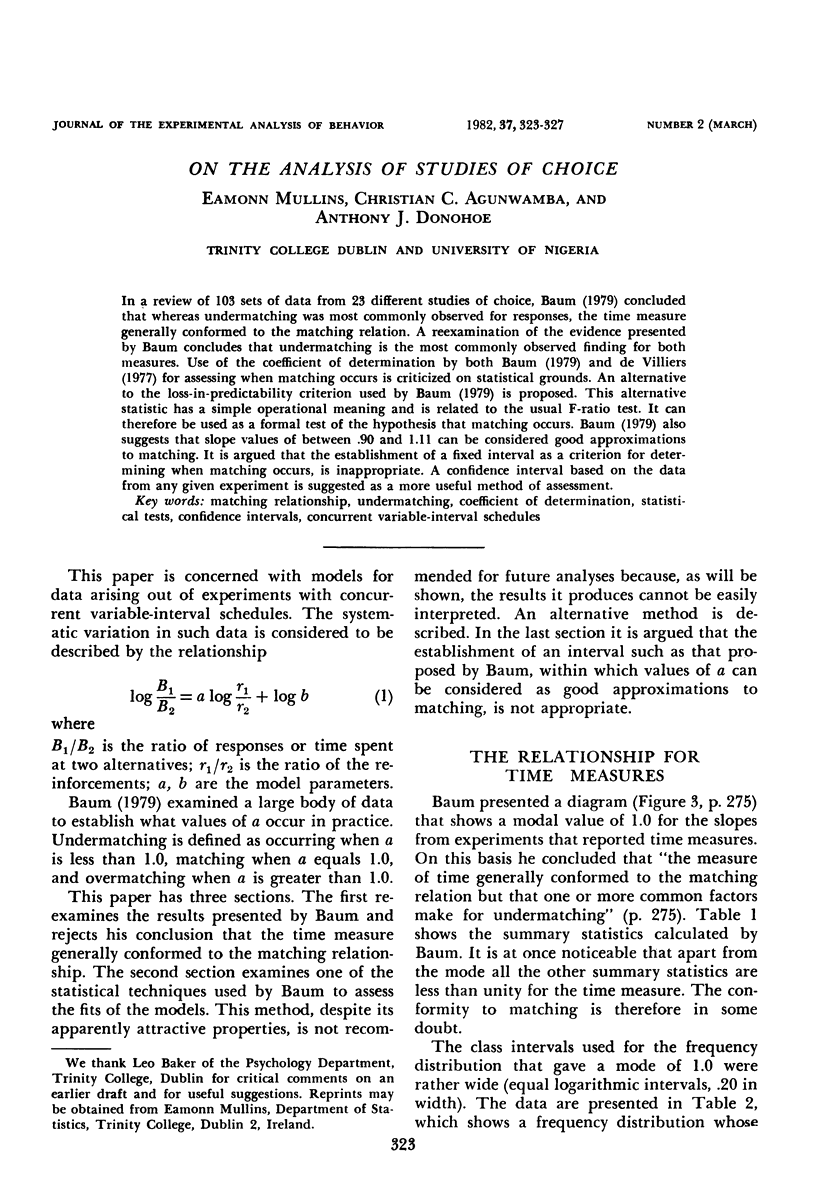
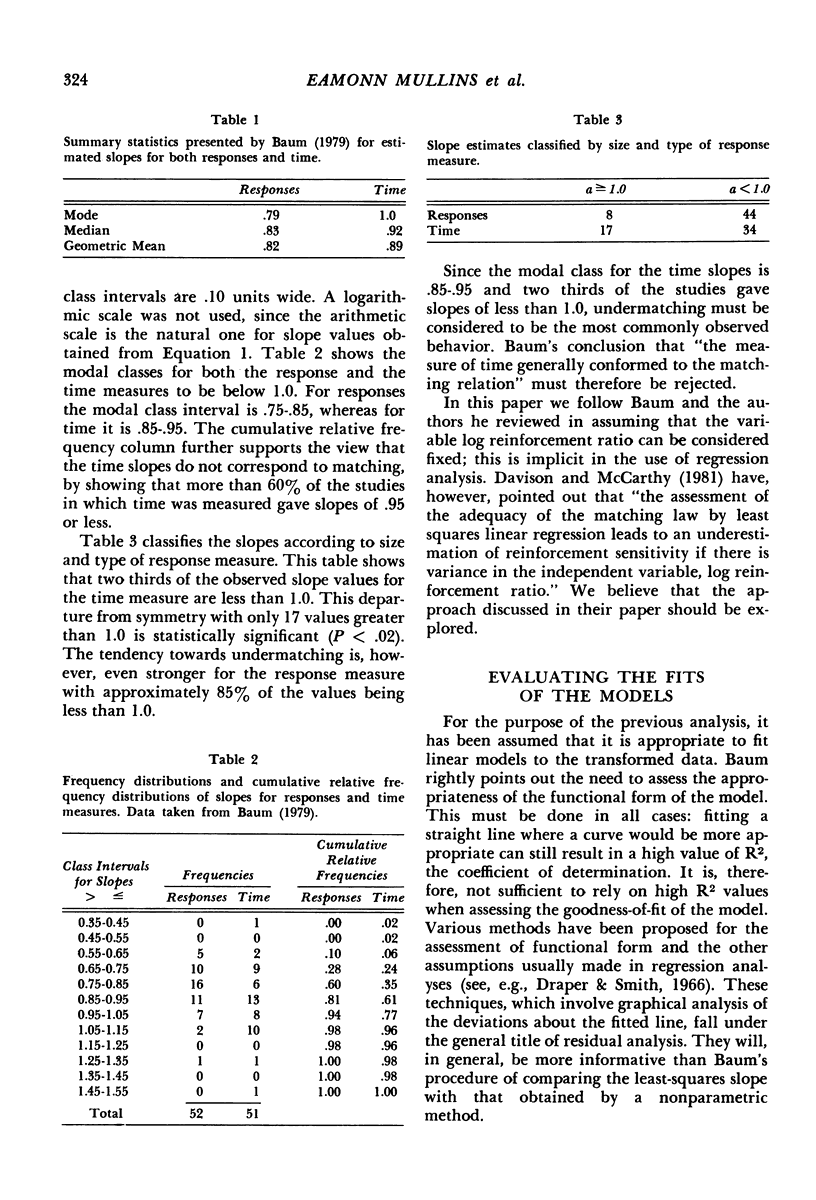
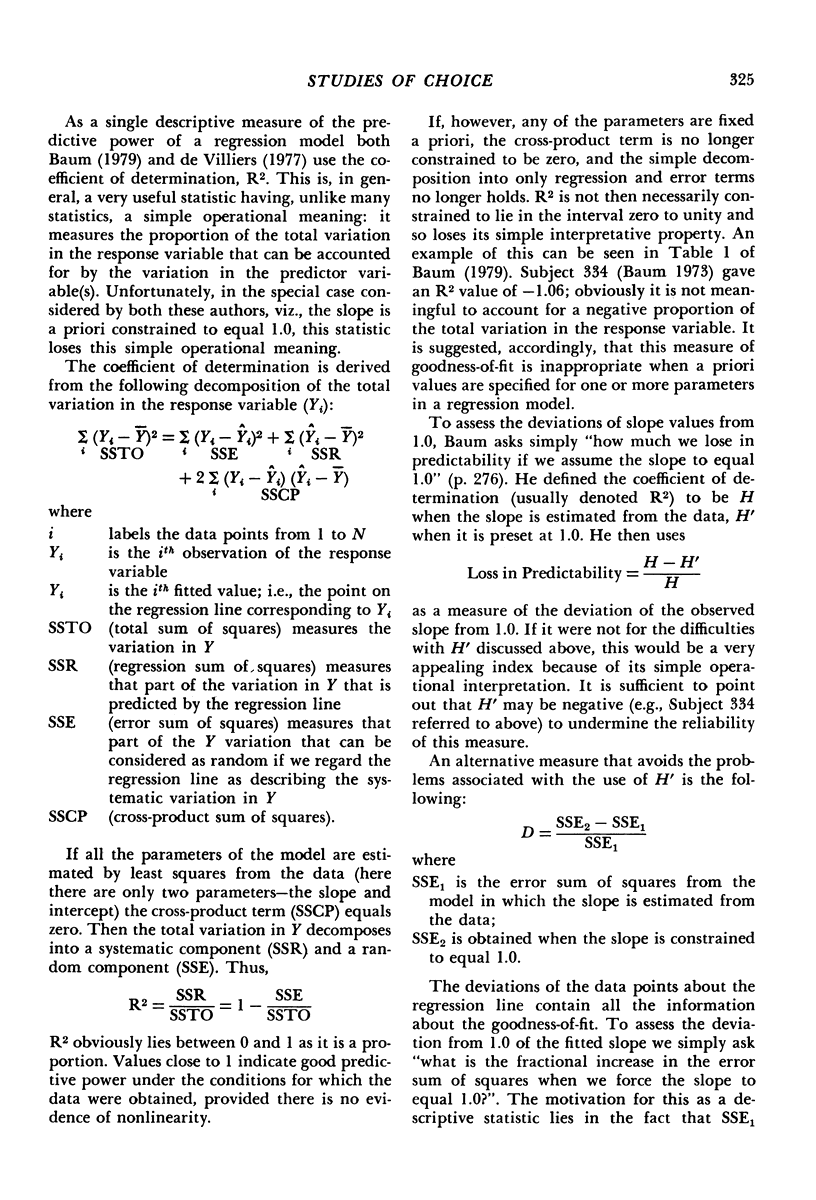
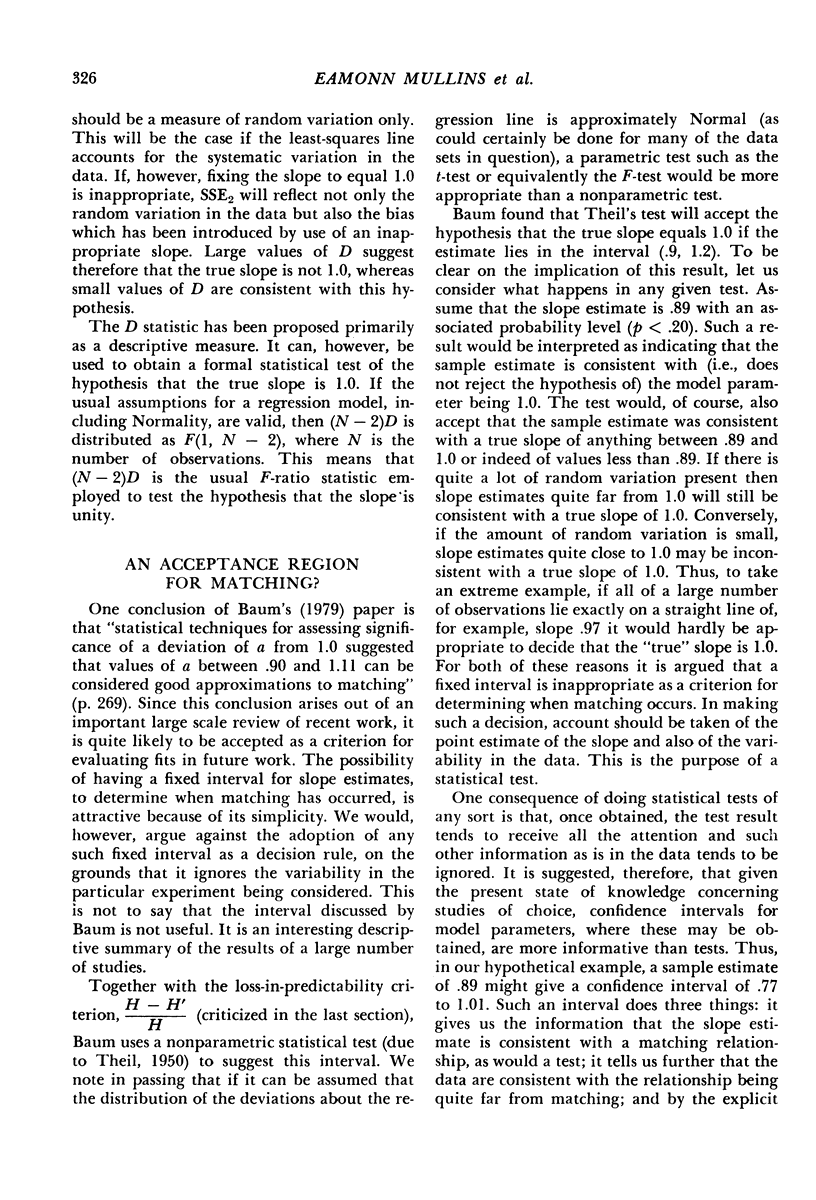
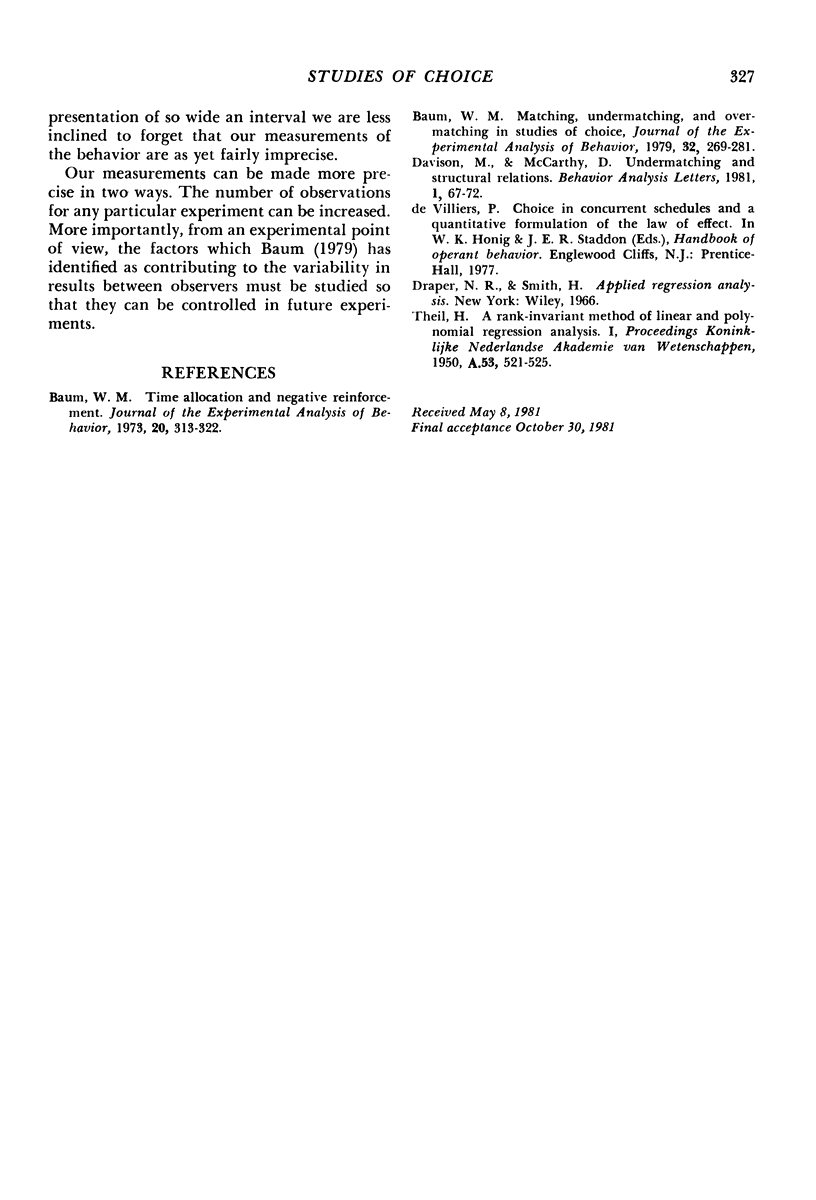
Selected References
These references are in PubMed. This may not be the complete list of references from this article.
- Baum W. M. Matching, undermatching, and overmatching in studies of choice. J Exp Anal Behav. 1979 Sep;32(2):269–281. doi: 10.1901/jeab.1979.32-269. [DOI] [PMC free article] [PubMed] [Google Scholar]
- Baum W. M. Time allocation and negative reinforcement. J Exp Anal Behav. 1973 Nov;20(3):313–322. doi: 10.1901/jeab.1973.20-313. [DOI] [PMC free article] [PubMed] [Google Scholar]


